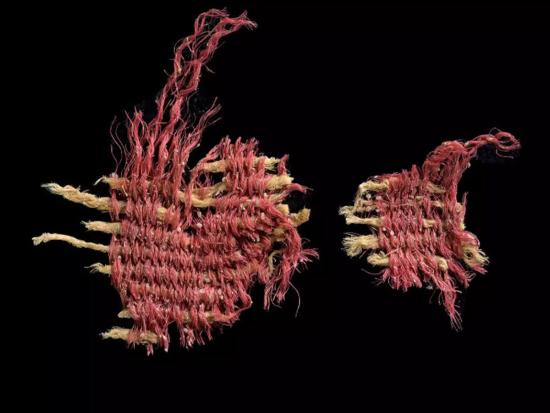
Archaeologists have shared a finding of a rare red dye that is mentioned in the Bible. In 2016, a series of expeditions were carried out by the Israel Antiquities Authority (IAA) and the Hebrew University in an undertaking to protect archaeological finds from thieves scouring the Judean Desert. The project was led by Dr. Eitan Klein, Dr. Uri Davidovich, Roi Porat and Amir Ganor and resulted in the finding of a tiny, red textile that appears to be around 3,800 years old. The textile’s red color peaked the archaeologists’ interest, and it was submitted for further analysis. The dye appeared to belong to what the Bible refers to as “Tola‛at Hashani” or “scarlet worm.” It is a term used some 25 times in the Bible and is one of the rarest colors in the ancient world. The dye comes from a female scale insect and has to be collected in a very short amount of time, between the time when she lays her eggs but before they hatch.
Dr. Naʼama Sukenik, Curator of the Organic Material Collection at the Israel Antiquities Authority led the analysis and described the process of analyzing the material. “Identifying the dye in the ancient textile was achieved using High-Performance Liquid Chromatography (HPLC), a device commonly employed in biology and chemistry laboratories to separate and identify substances in minute quantities, and it also serves archaeology. This advanced analytical method enabled us to pinpoint the dye’s origin down to the exact species of scale insect. Thus, we can determine with high probability that in ancient times, the textile was dyed using a species of Kermes vermilio, which produces kermesic acid, imparting the distinctive red hue.” The find also underscores the vast international trade that must have occurred during ancient times, as the type of tree insect identified is not native to Israel but to countries like Spain and France.
The “scarlet worm” also has a connection to Christ himself. Psalm 22 bears some of the infamous final words of Christ on the cross. In Matthew 27:46 “Eli, Eli, lama sabachthani?” which means “My God, my God, why hast thou forsaken me,” a reference to the first line in Psalm 22. Psalm 22 is identified as a prophetic psalm, seeing the moment of Christ’s crucifixion from his own perspective. In verse six, it says, “But I am a worm, and no man; a reproach of men, and despised of the people.” The word for “worm” is in reference to the scarlet worm used for the red dyes. When a female worm lays her eggs on the tree, she covers them and offers her body as sustenance. By the third day, she dies and secretes the red crimson color. By the fourth day, the mother’s body has curled up and turned white, giving the appearance of a patch of white wool on the tree. It’s interestingly reminiscent of Isaiah 1:18, which says, “Come now, and let us reason together, saith the Lord: though your sins be as scarlet, they shall be as white as snow; though they be red like crimson, they shall be as wool.”
